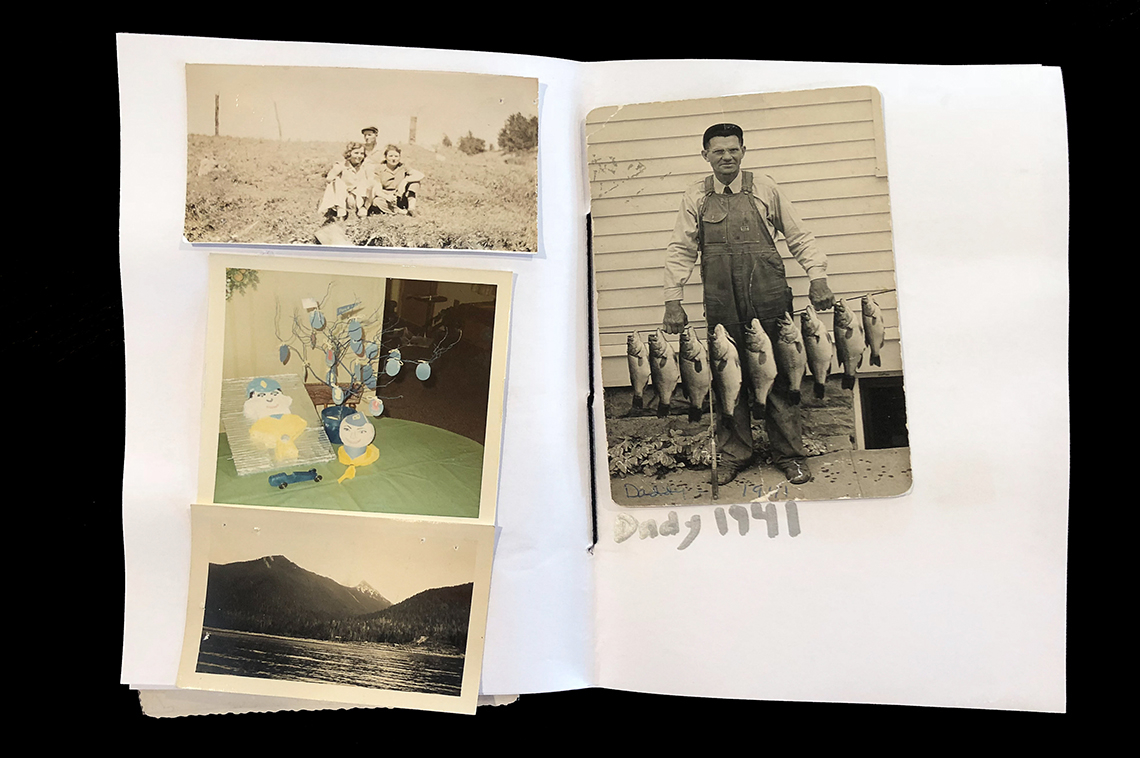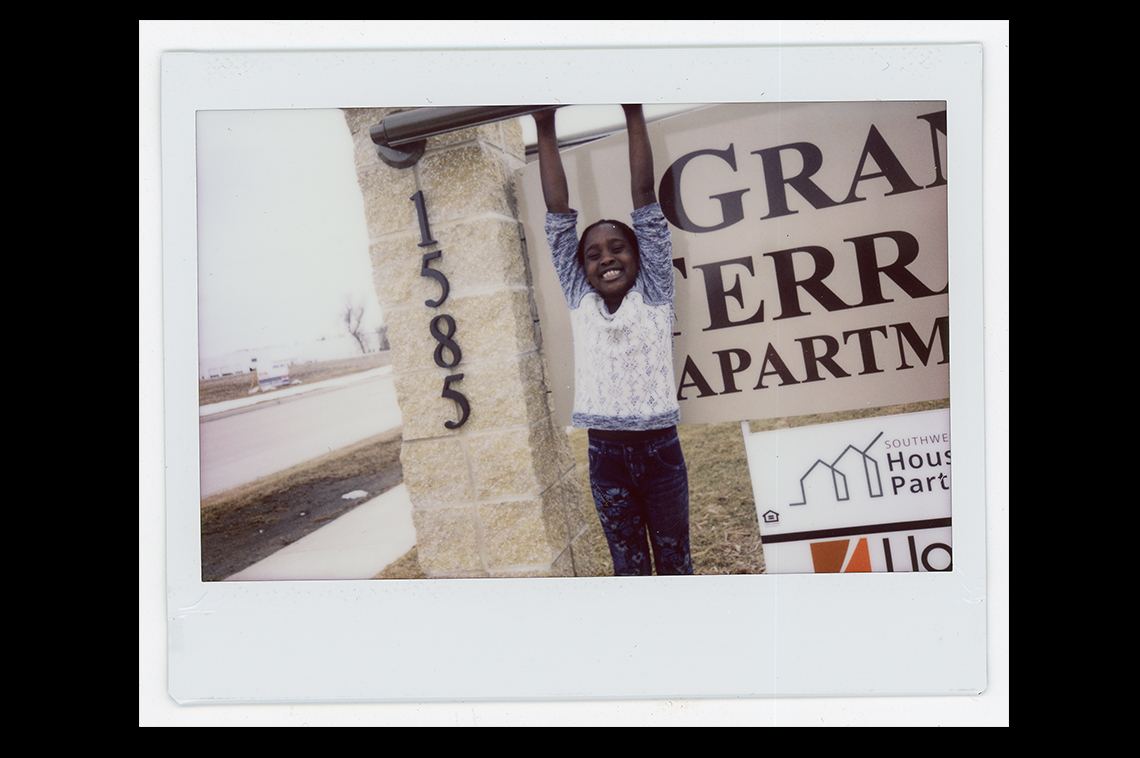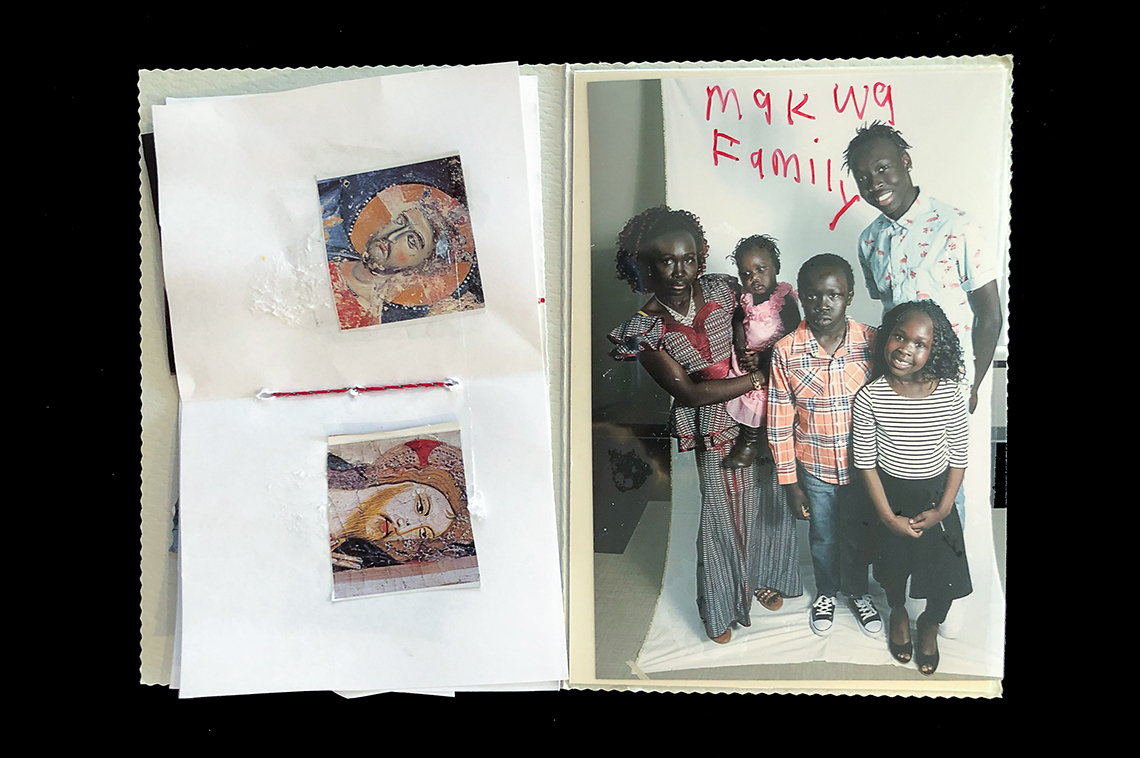


In 2015, ArtPlace made a Community Development Investment grant to the Southwest Minnesota Housing Partnership (SWMHP) to support their efforts to weave art and cultural strategies into community planning processes to engage a greater cross-section of residents in local decision making. In 2018, documentary storyteller Nik Nerburn spent six weeks involved in a facet of SWMHP’s work that came to be called The Grand Terrace Photo League. He shared the following account of his experience with ArtPlace.
The Grand Terrace Photo League was a collaborative eight-week photo ethnography of the Grand Terrace apartment complex in Worthington, Minnesota, made in collaboration with building residents, Lloyd Building Management, the Southwest Minnesota Housing Partnership (SWMHP), and me, documentary storyteller Nik Nerburn. The Grand Terrace Photo League took its name from the legendary New York Photo League (1936-1951), which radically transformed the American documentary tradition.
Worthington is in the far southwest corner of Minnesota, about 30 miles east of Sioux Falls, South Dakota, and about 10 miles north of the Iowa border. It is the economic hub for five Minnesota counties and three Iowa counties. The population hovers around 13,000, although it once shrank to little more than 8,000.
Over the past 40 years, Worthington has undergone a dramatic population shift. The town is now a mix of historic residents, who are primarily German and Scandinavian, and recent east African (primarily Ethiopian), southeast Asian, and Hispanic immigrants. As of the last census count, 4,500 of the town’s 12,764 residents are Hispanic. Per capita, it is the third most diverse community in the state, with the population speaking 58 languages. The primary employer in town is JBS Pork, a processing plant with wages starting at $15.90 per hour, where many of the recent immigrants work. Grand Terrace, a 48-unit apartment complex, stands at the crossroads of this population shift. It primarily houses working families who, in total, speak seven different languages.
The Photo League served the building residents by offering a variety of photography-based programming, including free family portraits taken in the studio set up in the building’s community room, restoration of old family photos, and an after school drop-in program where young people could explore a wide variety of photographic techniques while documenting their lives in and around the apartment complex. All programming was provided free to residents.
Above all, the Photo League sought to respond to the needs and desires of building residents. The community room served as the hub of the Photo League, with a semi-permanent photo backdrop and a rotating collection of cameras, props, activities, and snacks for the kids. Part of my role was being a “useful” photographer to residents who used the community room, and I ended up photographing First Communion celebrations, birthday parties, family reunions, prom parties, baby announcements, and numerous family portraits. Residents received a copy of the photo in the format they requested: a digital document or a framed print.
Sometimes the portrait-making process was loud and raucous; other times it was quiet and intimate. Community involvement took many forms. Curious friends and family would drop by and find themselves involved in setting up or taking a photo; youth participants would help direct subjects and organize equipment; and residents would ask questions of each other and learn about their neighbors by flipping through that day’s collection of prints.
As an artist who works across differences, I’ve found that photo-making is one of the best tools for collaborating across culture and language. Lots of people say they can’t draw, write, or sing—but rarely do you come across somebody who says they can’t take a photo, or don’t have a photo that’s close to their heart.
Here’s an easy starting exercise for practitioners interested in this type of project: To spark a group conversation, have everybody pull out their cell phone. Tell them to find a photo on it that tells a story about themselves—one that the group wouldn’t know just by looking at them. Each person holds up their phone and takes turns telling the story behind their photo.
The Grand Terrace Photo League project culminated in a permanent collection of photographs by resident youth being installed in the apartment complex. And through the generous support of SWMHP and the ArtPlace America Community Development Investment Program, almost 100 copies of a photobook documenting the process was donated to regional libraries, archives, and private collections, placing the faces and stories of these residents into the cultural fabric of Nobles county for many years to come. All proceeds from book sales are going to Be the Change: Leadership on Purpose, a youth-led organization in Worthington working with youth to reflect on their individual identities, deepen their understanding of social justice issues, and collectively organize for change.
Emphasizing process, rather than outcome, is critical to a project like this. Making photos with residents, rather than taking photos of residents, was always how I framed this work in my head. Photography, when done collaboratively and with a sensitivity to the power dynamics of cameras, can be very dignifying.
But how can an apartment complex give people dignity? Not being a housing policy expert, I’m not exactly sure. Being clean, well lit, having enough outlets, a sensible layout, affordable rent, a playground, and big kitchens can help. There are some things Grand Terrace really needs: an in-house social worker who can connect residents to services, a tenants committee, free wifi, and an indoor space for youth to run around during the brutal winters would be good places to start.
But there’s something else about our dignity that has to do with the stories we tell about our homes. Family photos displayed on a mantlepiece, hanging tapestries with colors from the homes we’ve left behind, clothing with sports insignias from our hometowns, a big table for gathering around, and a good view out the window are harder to put into blueprints. Even harder is the distant ring of church bells heard from downtown, the sweet smell of hay when the wind blows just right, the chatter from geese migrating overhead, and the way kids can grow up a lot in just eight weeks.
Grand Terrace reflects the changing demographics of our country in miniature. In the face of escalating toxic language directed at new immigrants and those of us who welcome them, it’s important that we work to tell compassionate, collaborative stories about our new homes and our new neighbors.
The right housing policies can help build us more places to live, but that’s only the start of welcoming newcomers into our communities. As policymakers, activists, community-engaged artists, and neighbors, we need to ask ourselves: How can we invest in the people we serve, and not just the places that house them?
***
The final hardcover Grand Terrace photobook is smyth-bound (so it lays flat when opened), printed on 96-pages of lucious matte 100# cotton paper, with a navy blue linen and silver foil cover. The lives and stories of apartment residents are explored within through essays, stories, portraits, youth-made images, and family photographs from residents’ personal collections, with text printed in English, Spanish, and Tigrinya (an Ethiopian language spoken by many building residents). You can buy the book here.
Watch a page-through video of the book.
Read about the project in Worthington’s Globe newspaper.
Learn more about Nik Nerburn’s work on his website.





